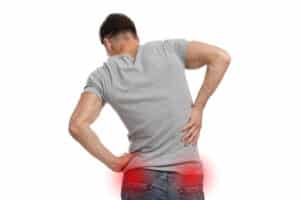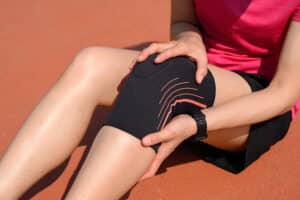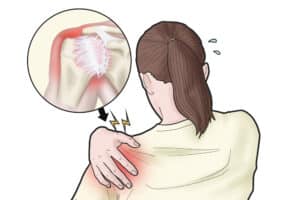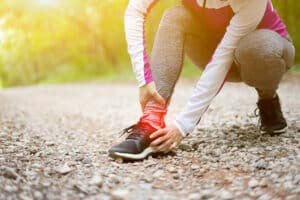Have you been diagnosed with tennis elbow and thought to yourself “But I don’t play tennis!” Don’t worry, you’re not the only one who has thought this. Only 5% of people suffering from tennis elbow relate the injury to tennis!
Don’t let the name confuse you. People who play sports are not the only people who develop tennis elbow. Tennis elbow occurs in your elbow when tendons are overloaded, most often due to repetitive motions of the wrist and arm.
There are many different technical names for tennis elbow. (We have listed a few of them below.) No matter what you label it, tennis elbow is a painful condition that can cause disruption to your life.
- Lateral elbow tendinopathy
- Lateral epicondylitis
- Lateral epicondylalgia
- Lateral epicondylosis
What causes tennis elbow?
Overuse
Quite often tennis elbow is due to damage to the extensor carpi radialis brevis (ECRB) muscle. This muscle helps to stabilize the wrist when the elbow is straight.
Gradual wear and tear of the muscle over time can lead to inflammation and pain. Microscopic tears can also form in the tendon when the ECRB is weakened from repetitive overuse.
Symptoms also occur when the annular (stabilizing) ligament is stressed.
Activities
Athletes are prone to getting tennis elbow, but there are many other people who suffer from this condition. Certain work and recreational activities that require repetitive and vigorous use of the forearm muscle can also cause tennis elbow.
Activities requiring firm wrist stability – such as playing tennis, or work tasks that are repetitive and require repeated wrist extension, including computer keyboarding, painting, plumbing, carpentry or pulling weeds in a garden – can stress the musculotendinous unit and cause symptoms.
What are the symptoms?
Tennis elbow symptoms appear on the outside of the elbow and may flow downward into the forearm and wrist. Symptoms include pain in the tendons of the wrist– most commonly when gripping an object. Pain and weakness may make it difficult to shake hands, hold a cup of coffee, or turn a doorknob.
Commons signs include:
- Pain or burning on the outer part of your elbow
- Weak grip strength
Your doctor or physiotherapist will conclude that you have tennis elbow when there is:
- Tenderness on or near elbow joint.
- Pain when your elbow is extended, and a resisted wrist extension is performed
- Pain when your elbow is extended, and a resisted middle finger extension is performed
- Pain when you bend your elbow and gently use other hand to help bend injured wrist down
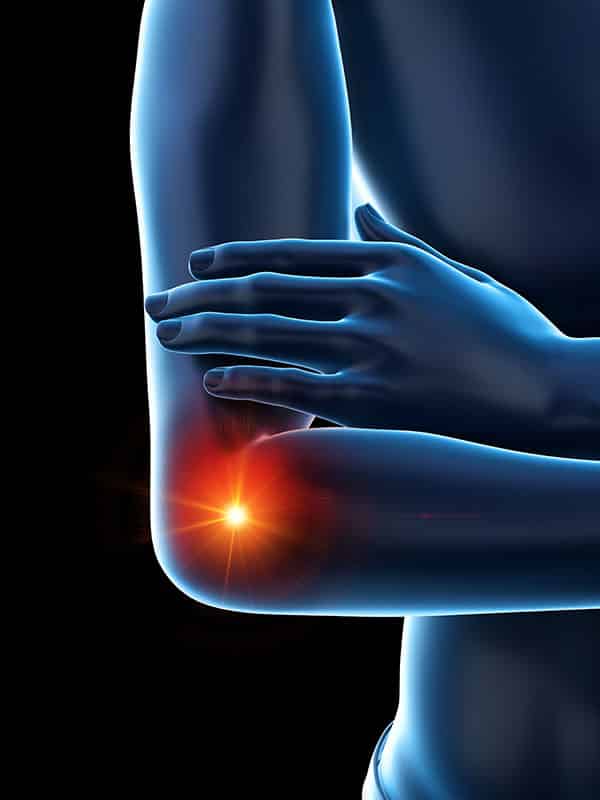
What can help with the pain?
Approximately 80% to 95% of patients have success with nonsurgical treatment.
Rest – The best remedy is going to be resting your arm from any and all activities that are causing you pain. This includes sports, recreational activities, and work tasks.
Ice – To help reduce the inflammation, it is recommended to ice your elbow. This will help to ease the pain that you are experiencing as well.
Pain medicine – Anti-inflammatory medicines such as ibuprofen will help reduce inflammation, while acetaminophen can help reduce the pain.
Braces – Using a brace centered over the back of your forearm may also help relieve symptoms of tennis elbow. This can reduce symptoms by resting the muscles and tendons.
Physiotherapy – Physiotherapy treatment is a great way to improve symptoms and speed up recovery.
Why physiotherapy treatment?
Your doctor will recommend that you start exercising your arm to stretch and strengthen the muscles.
The goal is to improve the strength and flexibility of your forearm muscles, so you won’t be bothered with tennis elbow again. Your physiotherapist will also educate you on how to change the activities that are causing the tennis elbow.
Physiotherapy exercises that can help tennis elbow
Wondering what exercises are going to get you on the right track to recovery? We have included a link to a resource to therapeutic stretching exercises that might help you.
https://orthoinfo.aaos.org/en/recovery/epicondylitis-therapeutic-exercise-program/
To ensure that this program is safe and effective for you, it should be performed under your doctor’s supervision. Talk to your doctor or physiotherapist about which exercises will best help you meet your rehabilitation goals.

How to prevent tennis elbow injuries
Looking for ways to prevent tennis elbow injuries? Stretching and strengthening exercises for your wrist and forearm muscles are a great place to start. Additionally, there are things that you can do in your day-to-day life to lessen strain on your arms.
- Avoid making repetitive movements with your arms and wrists. If you cannot avoid this, then take breaks as much as possible or wear a brace to help reduce the strain.
- When using your arms to lift things, try to use your shoulder and upper arm muscles to help alleviate strain on your elbow.
- If you are an active person, remember to warm up and stretch before participating in sports or other recreational activities that require repetitive motions with your arms.
- At work, avoid bending your wrist for long periods of time, rotate jobs and tasks if possible, or adjust your workstation to reduce strain.
- If you use tools often, choose tools with bigger grips, wear gloves, or choose tools with padding to absorb some of the shock.
- Tennis players do get tennis elbow. So, if this is you, make sure that your racquet is light with a larger grip and soft strings to reduce strain on the tendons.
FAQs
What happens if tennis elbow goes untreated?
Tennis elbow may go away on its own if you rest your arm. However, if left untreated and you do not change the habits that are causing the tennis elbow, it may become chronic and last for months or even years. This could also lead to nerve entrapment. It is important to see your doctor or physiotherapist to properly assess your condition and recommend appropriate treatment.
When should I see a doctor for tennis elbow?
Tennis elbow symptoms include pain, burning, or aching along the outside of your elbow and forearm. If the pain you are experiencing is severe, swelling, and bruising, it is time to seek professional help from either your doctor or a physiotherapist to correctly diagnose you and recommend treatment.
How long is recovery from tennis elbow?
The recovery process for tennis elbow is different for each person. It can get better without treatment if the arm is rested and the activity that is causing the issue is stopped or reduced.
Should you massage tennis elbow?
Massage is a great way to help ease the pain of tennis elbow. It also can help to heal the issue by increasing circulation in the area. You can massage the area by placing your finger on the outside of the elbow and rubbing across the tendon for approximately 5 minutes a day. Try not to press too hard. You should only feel mild pain while massaging.
Will an x-ray show tennis elbow?
Tennis elbow can be diagnosed via a physical exam. If your doctor has ordered x-rays, it is probably to explore the possibility of a facture or a dislocated joint, as x-rays do not show the tendons in your elbow clearly.
What is better – heat or ice – for tennis elbow?
The simple answer: do what feels best for you. Ice can help reduce inflammation and swelling, while reducing pain. However, heat may be a better choice for chronic tendon pain. Heat also helps relax the muscles, relieve pain, and increases blood flow to the area, which helps in the healing process.
What is the difference between tennis elbow and tendonitis?
Tendonitis is the inflammation of a tendon. Tennis elbow is one of the most frequent forms of tendonitis that occurs in your elbow extending down to your wrist.
Is tennis elbow a pinched nerve?
A pinched nerve causing neck and arm pain is referred to as cervical radiculopathy. The symptoms can be like tennis elbow. A doctor or physiotherapist will be able to help determine what is causing your elbow pain based on a physical exam and tests.
Is tennis elbow like arthritis?
They both will cause inflammation, but they are not the same. Arthritis is inflammation of the joint whereas tennis elbow is inflammation of the tendon.


